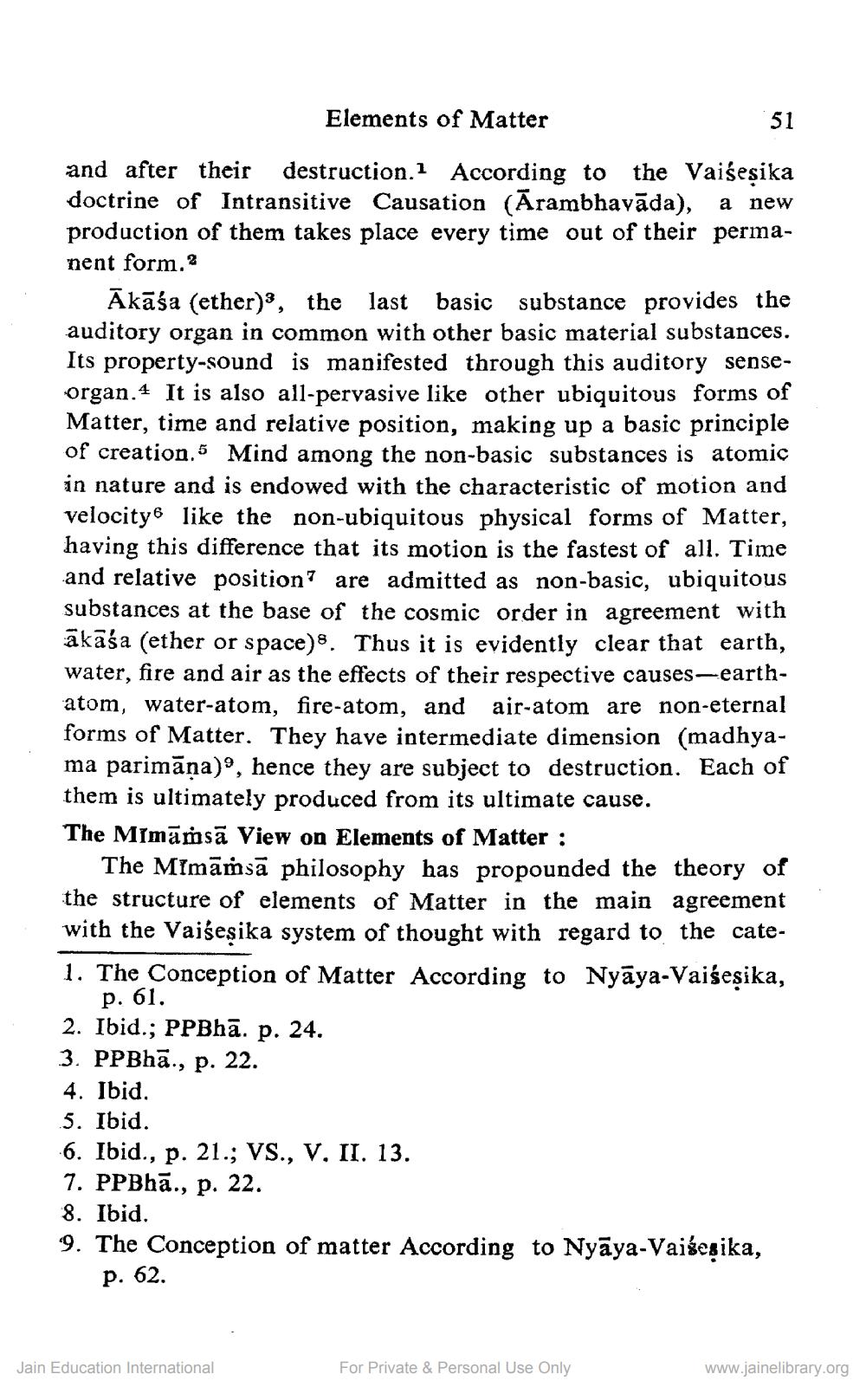________________
Elements of Matter
and after their
destruction.1 According to
the Vaiseṣika
doctrine of Intransitive Causation (Arambhavāda), a new production of them takes place every time out of their permanent form.2
Akāśa (ether)3,
the last basic substance provides the auditory organ in common with other basic material substances. Its property-sound is manifested through this auditory senseorgan. It is also all-pervasive like other ubiquitous forms of Matter, time and relative position, making up a basic principle of creation. Mind among the non-basic substances is atomic in nature and is endowed with the characteristic of motion and velocity like the non-ubiquitous physical forms of Matter, having this difference that its motion is the fastest of all. Time and relative position are admitted as non-basic, ubiquitous substances at the base of the cosmic order in agreement with ākāśa (ether or space)s. Thus it is evidently clear that earth, water, fire and air as the effects of their respective causes-earthatom, water-atom, fire-atom, and air-atom are non-eternal forms of Matter. They have intermediate dimension (madhyama parimāṇa), hence they are subject to destruction. Each of them is ultimately produced from its ultimate cause.
51
The Mimamsa View on Elements of Matter:
The MImamsa philosophy has propounded the theory of the structure of elements of Matter in the main agreement with the Vaiśesika system of thought with regard to the cate1. The Conception of Matter According to Nyāya-Vaiseṣika, p. 61.
2. Ibid.; PPBhā. p. 24.
3. PPBhā., p. 22.
4. Ibid.
5. Ibid.
6. Ibid., p. 21.; VS., V. II. 13.
7. PPBhā., p. 22.
8. Ibid.
9. The Conception of matter According to Nyaya-Vaiścṣika, P. 62.
Jain Education International
For Private & Personal Use Only
www.jainelibrary.org




